The Otago Region lies on the southern end of New Zealand’s South Island. It is home to Queenstown, Wanaka, and Mount Aspiring National Park on the western end, then stretches east to the rugged Otago Coast. I would highly recommend taking a road trip from Christchurch to the Catlins along the Otago Coast to experience some of New Zealand’s most underrated beauty!
For this itinerary, you’ll need a rental car. You can also look into renting a campervan to save money on hotels. We have rented through Jucy and Star RV before and have had a great experience with both companies.
*Disclaimer: This post contains affiliate links. If you purchase a product or book a tour through the link, then we receive a small commission at no extra cost to you. We really appreciate your support!
7 Places you Don’t Want to Miss on a New Zealand’s Otago Coast
Table of Contents
- 1. Oamaru
- 2. Moeraki Boulders
- 3. Katiki Point
- 4. Dunedin
- 5. Tunnel Beach
- 6. Otago Peninsula
- 7. Tunnel Hill
1. Oamaru
Any road trip in New Zealand is a treat for the eyes, especially the Otago Coast.
With rolling green hills dotted with sheep, hazy coastal views, and charming Victorian cities.
The first stop along the Otago Coast is Oamaru, a unique old-world coastal town with a rich history, diverse culture, and stunning Victorian streetscapes.
Best things to do in Oamaru
Harbour Street: Stroll along Harbour Street, known as the Victorian Precinct. It holds the highest concentration of Victorian buildings in New Zealand. It is lined with stately historic buildings dating back to the late 1800s. This is a great place to grab a bite to eat or browse the storefronts.
Galleries and Museums: The “Lost Souls Gallery” is an interesting place to pop into for some interesting, and borderline disturbing, artwork.
The Steampunk HQ is also a bizarre museum filled with all sorts of quirky exhibits and displays.
Take a factory tour: The Whitestone Cheese Factory prides itself on making the best hand-crafted artisan cheese on the island.
For $30 guests can take a guided tour to learn about the cheese-making process, sample different types of cheese, and take home a goody bag.
Distillery tours are also available at the nearby New Zealand Whisky Company.
Cape Wanbrow Preserve: This rocky headland is a great place to enjoy walking tracks with views over the ocean. You’ll also find WWII gun emplacements and the remains of an old lighthouse.
Oamaru Public Gardens: These public gardens opened in 1876 and are considered the oldest public gardens in all of New Zealand.
The gardens are open every day and are free to enter. Walk along the garden trails to discover a children’s playground, Wonderland Garden, statues, fountains, and even an aviary and peacock house.
Friendly Bay Playground: Our kid’s favorite spot in Oamaru was the Friendly Bay Playground, also known as Steampunk Playground.
You’ll find all sorts of unique and innovative playground structures and equipment to fuel their imaginations.
We didn’t make it here until after dark but my kids still said it was the best park they had ever been to.
Blue Penguin Colony: Oamaru is best known for its resident blue penguin colony. For optimal viewing, guests can visit the Blue Penguin Colony and pay to sit on bleachers to watch the penguins come in from the ocean at sunset.
You can also spot penguins for free at Sumpter Wharf. They like to hang out under the dock around sunset and even after dark. Just be sure to keep your distance.
And if you happen to be in Oamaru after dark, be sure to look up at the night sky. Without much light pollution, you will be rewarded with the most spectacular starry sky.
Bushy Beach: The nearby Bushy Beach is also a great place to spot yellow-eyed penguins.
The best time to see them is just before sunset as they come back to nest after feeding. The beach is a beautiful stretch of sand and is a great place to visit during the day as well.
2. Moeraki Boulders
The Moeraki Boulders are a natural wonder. These perfectly round rocks can be found scattered all along the shore of Koekohe Beach.
They vary in size with the largest having a diameter of just over 7 feet.
Many of them have cracks radiating from a hollow core, perfect for some entertaining photos.
There are several theories as to where the boulders came from, including a Maori legend about a shipwreck. However, I tend to side with the alien egg story just to keep things interesting.
Scientifically, it is believed that the boulders began forming about 60 million years ago from ancient sea sediment.
They have been preserved in the surrounding cliffs and exposed through erosion. It is believed that more boulders are packed into the mudstone cliffs and eventually erosion will cause them to loosen and fall to the beach below.
While the Moeraki Boulders are the most popular, there are actually a few other locations in New Zealand where you can find similar boulders.
The Katiki Boulders are about 12 miles south of Moeraki and the Koutu Boulders can be found in Hokianga on the North Island.
There were even more boulders scattered on the beach when they were first discovered in the 1800s. Unfortunately, people began taking the smaller boulders to keep as souvenirs, which is of course illegal now.
It is free to visit the Moeraki Boulders. Parking is available at the Moeraki Boulders Cafe and Gift Shop located at 7 Moeraki Boulders Road in Hampden.
3. Katiki Point
Katiki Point is a bit of a South Island New Zealand Hidden Gem. You won’t find much mention of it in guidebooks, but it is arguably one of my favorite spots on the whole South Island.
Katiki Point is home to a beautiful white wooden lighthouse, also known as the Moeraki Lighthouse.
It was commissioned to be built in the late 1800s after several shipwrecks occurred in the dangerous reefs surrounding Katiki Point.
After observing the exterior of the lighthouse, you can follow a trail to the left that leads down to a viewing area and penguin sanctuary.
Volunteers have constructed booths, called hides, where visitors can observe the largest yellow-eyed penguin colony on the South Island.
The best time to see the penguins is in the morning between 7:30-9 am before they head out to sea, or in the evenings after 5 pm when they waddle back to their nests.
I mean, you haven’t really lived until you’ve seen a penguin waddle in real life. It’s the cutest.
The reserve is open from 7:30 am-7:30 pm. Entrance is free but donations are greatly appreciated.
After visiting the observation booths, head back to the lighthouse. From the lighthouse, there is another trail to the right that leads out onto the peninsula that is just bursting at the seams with wildlife.
Just before the sun sets, the penguins and sea lions come in from the ocean after a day of feeding.
It is just magical to see these beautiful animals in their natural habitat surrounded by the richly painted sky of a setting sun.
The ever-changing sky kept competing with the animals for our attention, it was truly surreal.
As you walk along the trail you will see penguins nesting in the tall grass, sea lions wrestling nearby, seal pups splashing in tide pools, and spotted shags flying overhead. It truly is a memorable experience.
Just be sure to keep your distance from the wildlife. Always stay on the designated trail and don’t use flash photography.
4. Dunedin
Dunedin is the second largest city on the South Island, after Christchurch, and the sixth most populated city in all of New Zealand.
Dunedin is filled with exquisite architecture and a sea of spires. It is buzzing with street-side cafes, museums, and galleries. After exploring the untamed beauty of the Otago Coast, take some time to experience Dunedin’s urban sprawl.
Best things to do in Dunedin
Baldwin Street: No visit to Dunedin is complete without a stop at Baldwin Street.
Baldwin Street holds the Guinness World Record as the steepest residential street in the world. It is so cool to walk up to the top and see the houses that are built on the steep incline.
Once a year they have a Jaffa race where they roll tens of thousands of these iconic round candies down the street. Can you just imagine what that would be like?!
Baldwin Street is only .22 miles long, but has a 34.8% gradient and 19-degree slope, so you’ll need to catch your breath by the time you reach the top!
The Octagon: The Octagon is an eight-sided plaza and the hub of Dunedin’s city center. It is surrounded by a collection of business and civic buildings boasting Victorian architecture and is bustling with cafes, restaurants, and shops.
Be sure to step into the regal St Paul’s Cathedral. The University of Otago is also located about a mile and a half away and is New Zealand’s oldest university.
There are several other prominent cathedrals in Dunedin. The First Church of Otago is considered the most impressive of New Zealand’s 19th-century churches and is my personal favorite.
Open-air markets can often be found in the pedestrian portion of the Octagon. The Friday Markets are held from 9 am-4 pm on the first Friday of the month from October-April, and on any day that a cruise ship is docked.
Dunedin Railway Station: The Dunedin Railway Station is the crowning architectural jewel of the city. This stately Flemish Baroque-style building dates back to 1906 and is a prominent landmark in Dunedin.
The station is open to the public where you can step inside to see the ornate details, such as the mosaic floor consisting of approximately 750,000 porcelain tiles.
A restaurant can be found on the main floor and an art gallery on the upper floor. The Otago Farmers Market is also held in the parking lot every Saturday where you can pick up fresh produce and local handmade gifts.
Toitu Otago Settlers Museum: Admission is free to the Otago Settlers Museum.
It is filled with a treasure trove of artifacts and exhibits chronicling the history of Otago’s first settlers until the modern day.
My kids loved the interactive displays and I got a reality check when I saw technology from my childhood displayed behind a glass case. My kids still can’t believe I ever lived in a world without the internet and cell phones.
They also liked seeing Josephine, a retired steam locomotive on display, along with the 14 other fascinating exhibitions.
There are several other museums in Dunedin if you are interested. The Otago Museum comes highly recommended and is free to visit.
The Museum of Natural Mystery is also a small but quirky museum with a collection of skulls, unusual artifacts, and curiosities. Admission is $5.
Signal Hill: The best panoramic views over the city and harbor can be found at the top of Signal Hill. The best time to go is at sunrise or sunset, although it is also breathtaking at night when the city lights up.
Tomahawk Beach: A beautiful and secluded windswept beach with sand dunes to explore. The view from the hill above the beach is spectacular too.
Dunedin Botanic Garden: The Dunedin Harbour and surrounding hills are actually the remnants of an extinct volcano. Visit the Dunedin Botanic Gardens where you can take the Dunedin Volcano trail to the top of an extinct volcano. Plan for about an hour to complete the interpretive trail. There are also several other trails weaving throughout the colorful sprawling gardens.
Ocean Beach Railway: Take a train ride on this heritage railway. Open most weekends from Labor Day in October until the Queen’s Birthday in June. At the train station, you can also see New Zealand’s oldest operational Steam Locomotive and an unrestored carriage.
5. Tunnel Beach
Tunnel Beach is set among a wild and stunning coastline and has rumors of a tragic backstory.
In the 1800s, the wealthy Cargill family helped settle Dunedin and built ‘Cargill Castle’, whose derelict remains can be seen up the coast.
John Cargill (son of William who built the castle) wanted a private beach for his family away from the prying eyes of the public.
He hired men to excavate a tunnel through sandstone to access a remote and pristine isolated beach.
Rumor has it that this was a birthday gift for his daughter who tragically drowned at that same beach a short time after. It may be a rumor, but there is a definite eerie feeling in the tunnel and every photo I took had a floating blue orb.
I’m not saying this place is haunted, but I am saying I don’t blame that poor girl who drowned if she wants to keep coming back here. It is pretty amazing after all.
Not only was the beach enchanting, but there were so many alluring caves, tunnels, and climbing rocks that kept the kids entertained for hours.
The sandstone cliffs are also filled with fossils and ancient whale bones so keep your eye out.
The trail from the parking lot to the tunnel is 1.25 miles round trip. It is downhill so expect to be a little winded on your way back up.
It’s worth the effort and is one of our recommended stops on a 10-Day South Island Road Trip.
6. Otago Peninsula
The Otago Peninsula is considered the wildlife capital of New Zealand. It is home to the regal Royal Albatross, endangered Yellow-eyed and Blue Penguins, the rare New Zealand Sea Lion, and a variety of other marine wildlife. This is also the best spot to view migrating humpback whales, orcas, and dusky dolphins.
Taiaroa Head lies at the end of the peninsula. This rugged cape is home to a colony of over 100 Royal Albatross. This is a rare occurrence and is the only albatross mainland breeding colony in the world. Visit the Royal Albatross Centre to take a tour and learn more about these majestic birds.
You can also view the Taiaroa Head Lighthouse which was built in 1864, as well as the remains of a former gun emplacement used for coastal defense.
The nearby Pilots Beach is a small cove and home to the largest Blue Penguin colony on the Otago Peninsula. There is a viewing platform for visitors to observe the penguins from a distance.
This beach was once referred to as “Measly Beach” since this is where the afflicted Maori would bathe during the measles epidemic.
Victory Beach is the longest beach on the Otago Peninsula. You’ll find vast stretches of sand and swaying grasslands.
It is also marked with natural volcanic pyramids that you can climb for uninterrupted views. At low tide, you can also see the partial remains of the SS Victory shipwreck, to which the beach has been named.
Sand Fly Bay is a beautiful beach near the beginning of the peninsula. You’ll find large sand dunes with views over the jewel-toned Pacific Ocean.
There is also a large colony of yellow-eyed penguins that nest here. You’ll also find New Zealand fur seals and sea lions sunbathing on the shore.
Several hiking trails on the peninsula boast panoramic coastal views. The 1.9-mile Sandymount loop track once led to the lookout points for “The Chasm” and “Lovers Leap”. Unfortunately, the viewing platforms have been removed, but the peninsula hike still offers sublime views.
You can also tour the Larnach Castle and Gardens. This lavish castle was built on the peninsula in 1871 by William Larnach, a wealthy merchant and politician.
The castle has been lovingly restored down to every last impeccable detail by the Barker family. Visitors can tour each of the opulent rooms and award-winning gardens. For a unique stay, they also offer boutique accommodations on the castle grounds.
7. Tunnel Hill
Tunnel Hill is a historic reserve and the site of an old abandoned 19th-century railway tunnel. It is located in Katea, just outside of the Catlins. While on your Otago Coast road trip, you will definitely want to take time to explore the untouched beauty of the Catlins.
The tunnel was dug out entirely with hand picks and shovels then lined with handmade local bricks. Be sure to admire the preserved intricate brickwork.
It took years to finish and took the lives of two workers in the process. Which, of course, led the kids to believe it was haunted and they spent the whole walk looking for ghosts and humming the Indiana Jones theme song.
It is a short 0.3-mile scenic forest trail from the parking lot to the train tunnel. The tunnel was completed in 1895 and serviced the Balclutha–Tahakopa railway line that transported mainly timber through The Catlins. The last train ran on these tracks in 1971.
The tunnel is over 800 feet long, so bring a flashlight if you plan to explore. If you’re lucky you may even spot the elusive glow worms deep in the tunnel.
The untouched beauty of the Otago Coast truly is breathtaking. I hope this guide will help as you plan a New Zealand Otago Coast road trip!
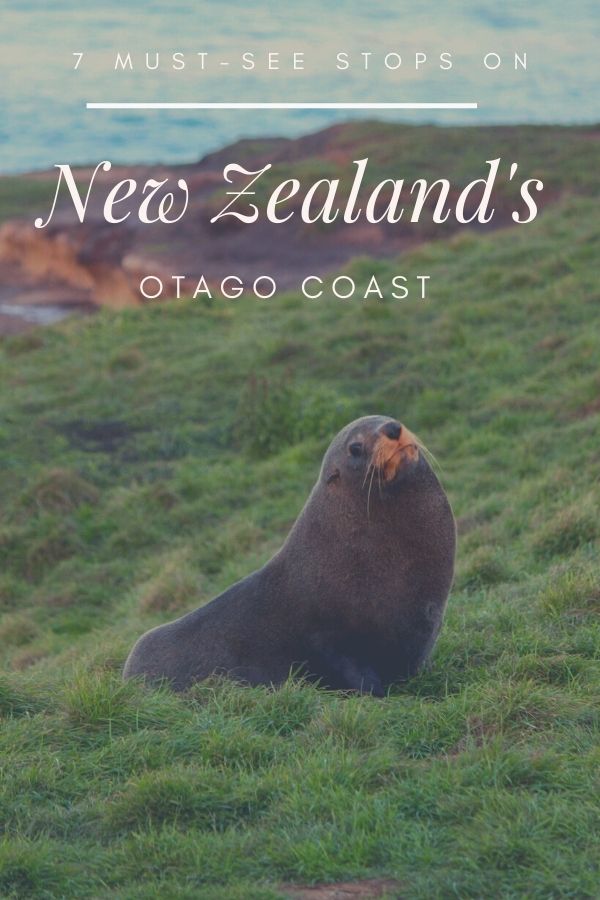
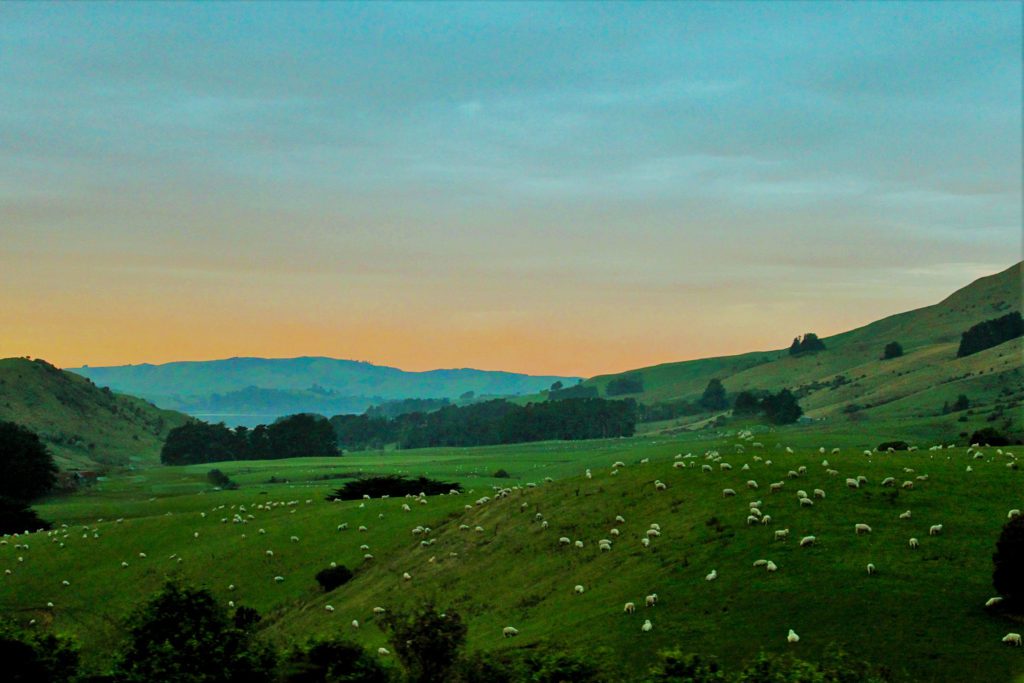
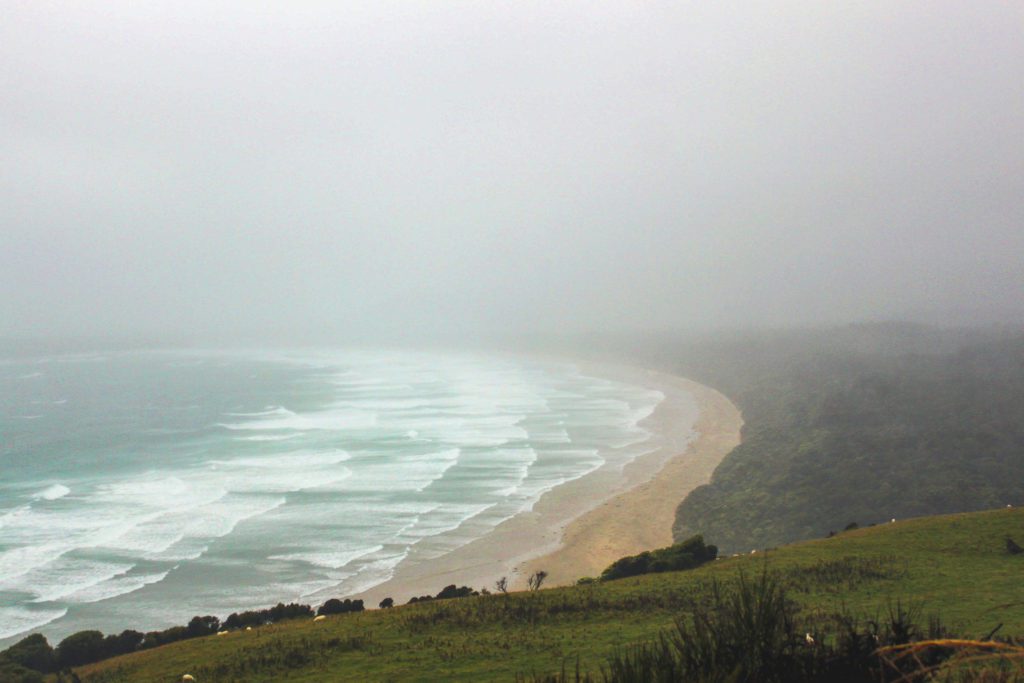
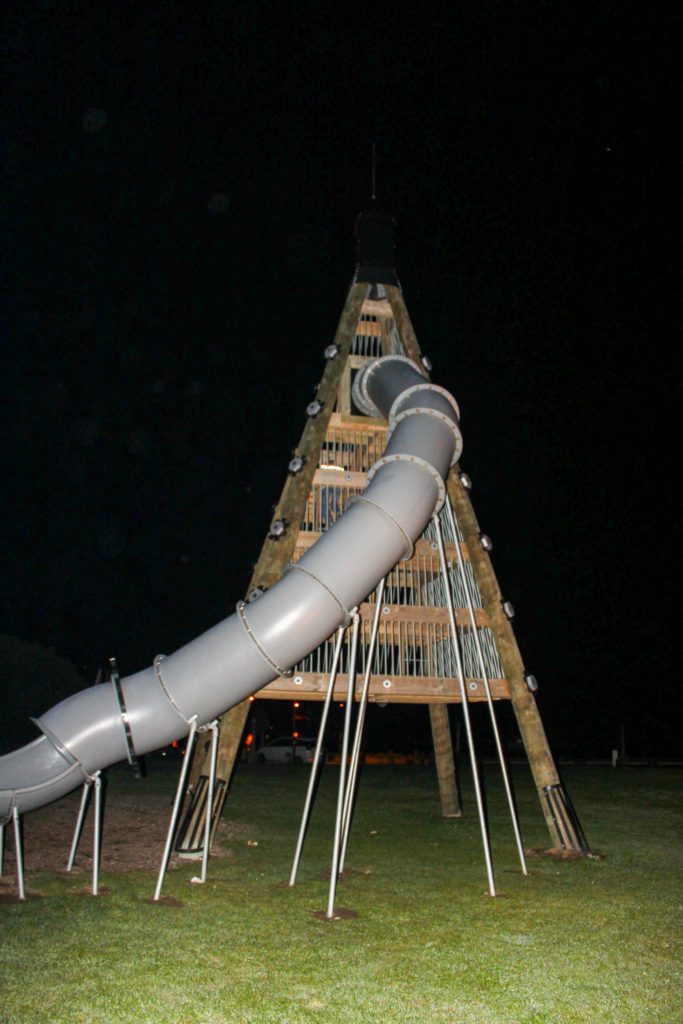

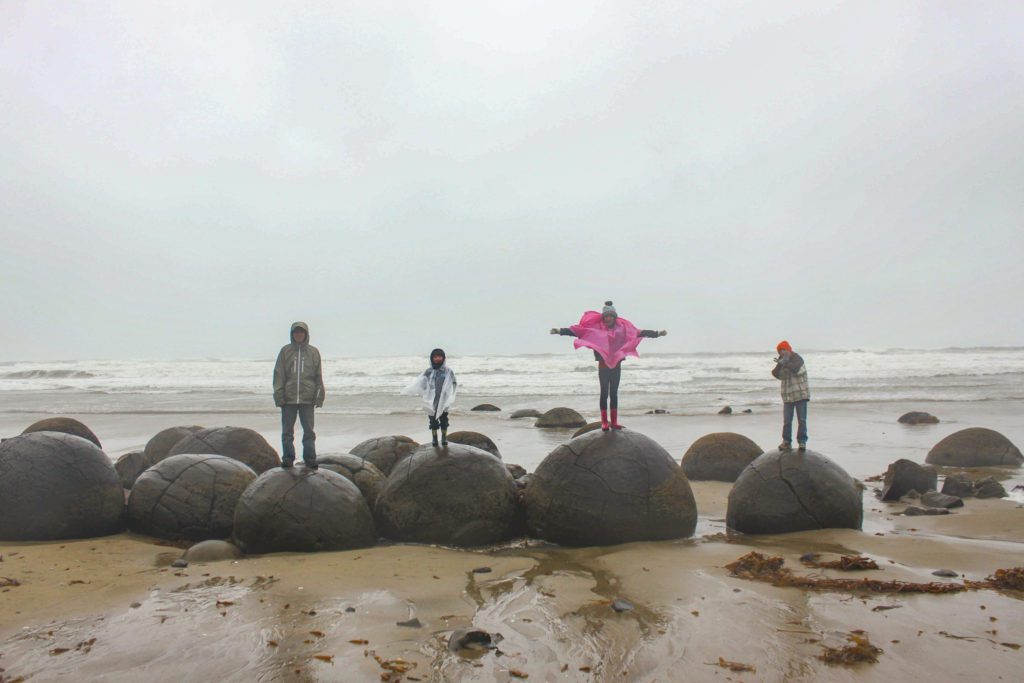
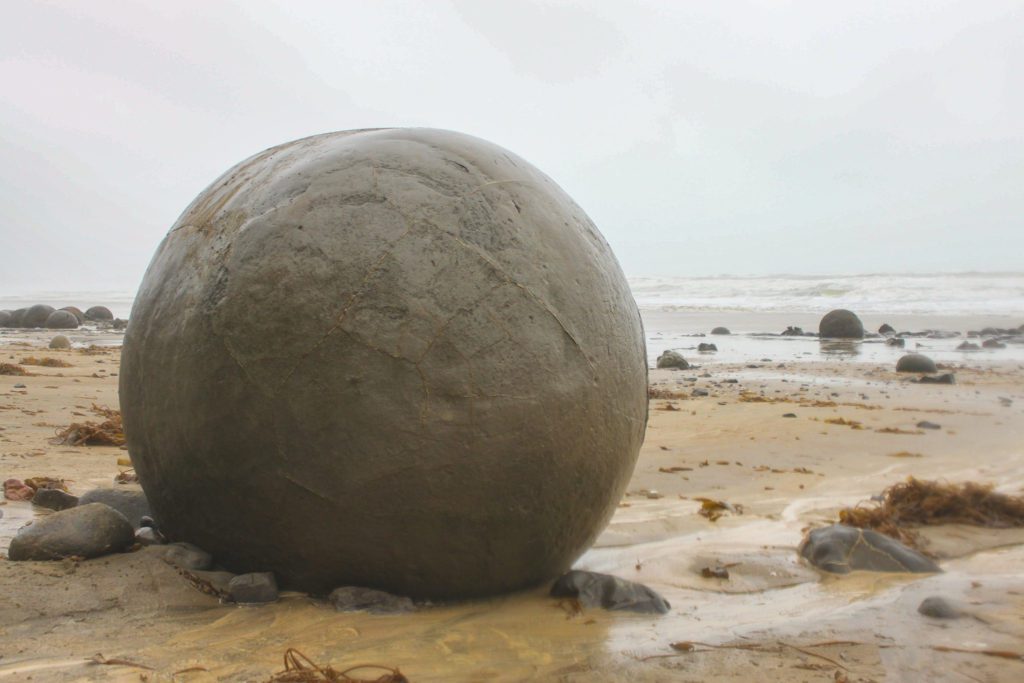

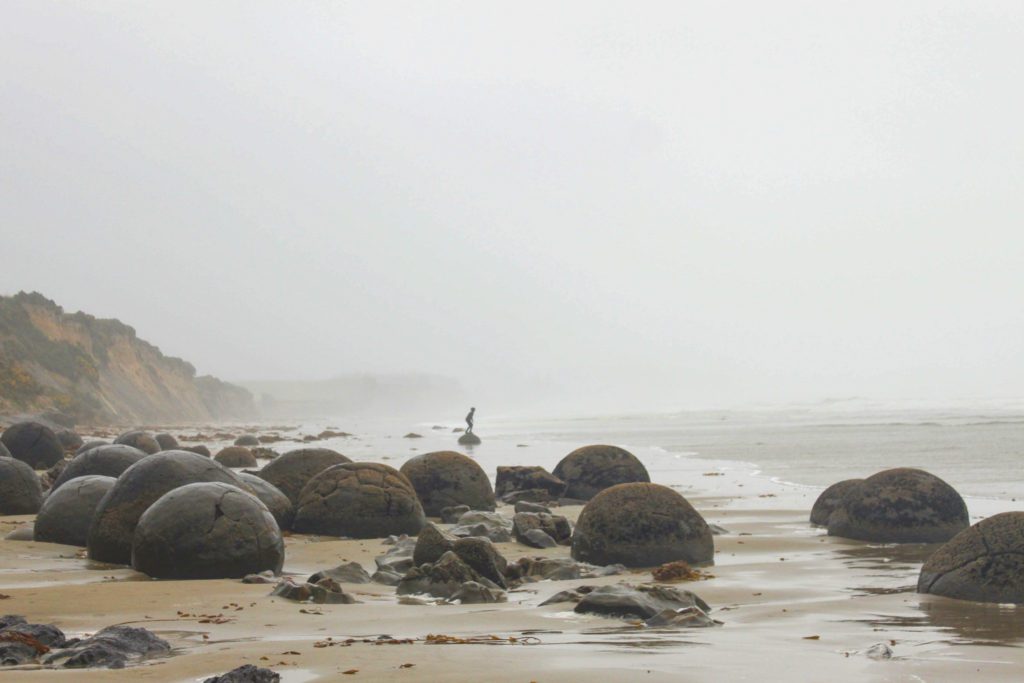
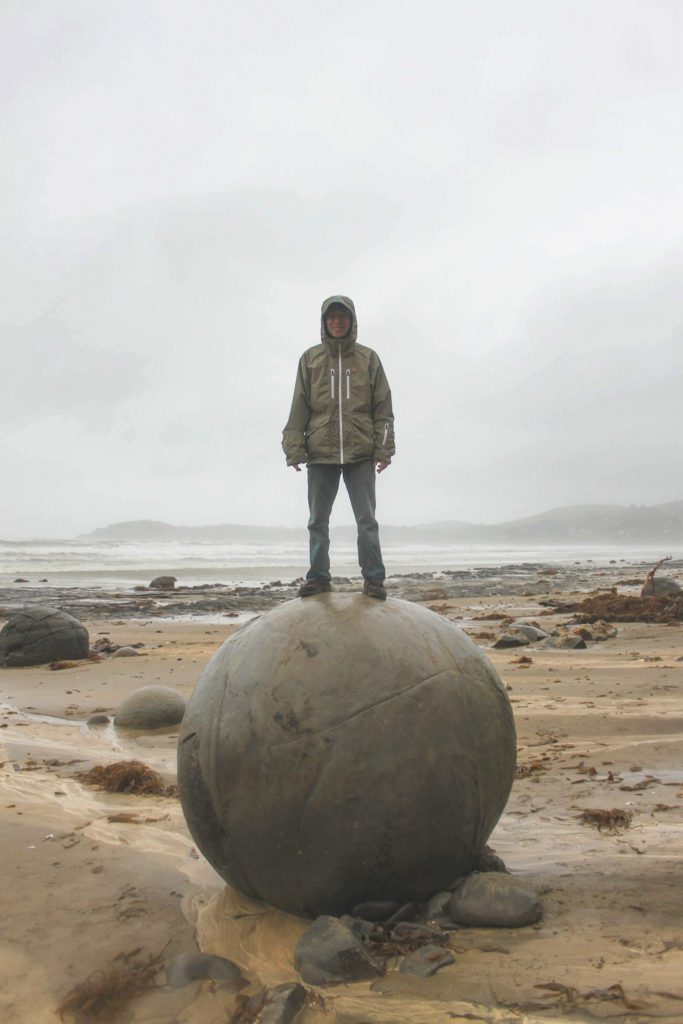
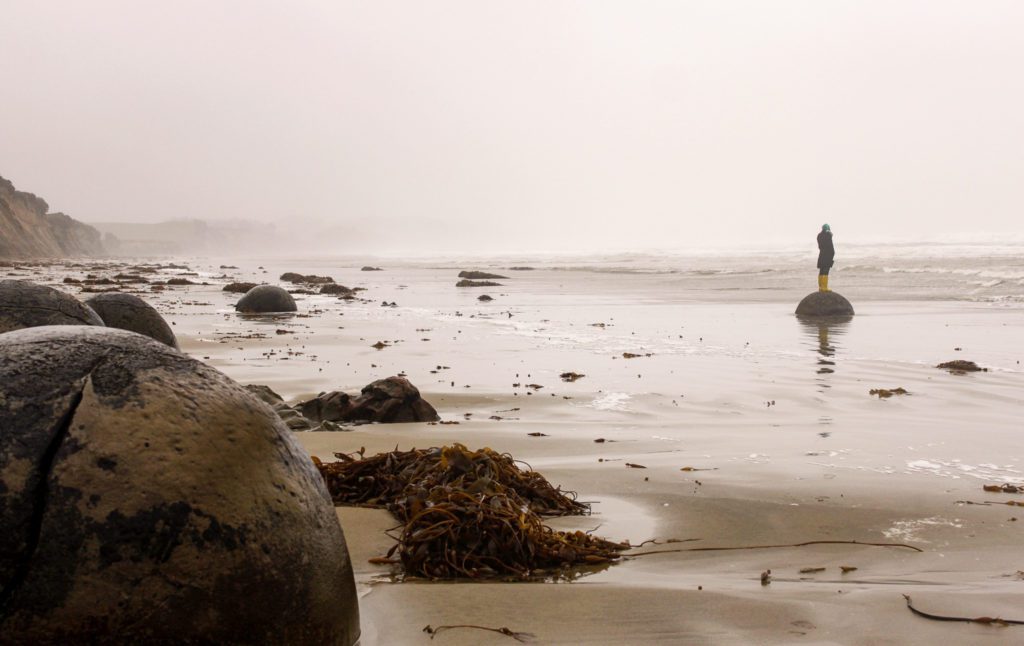
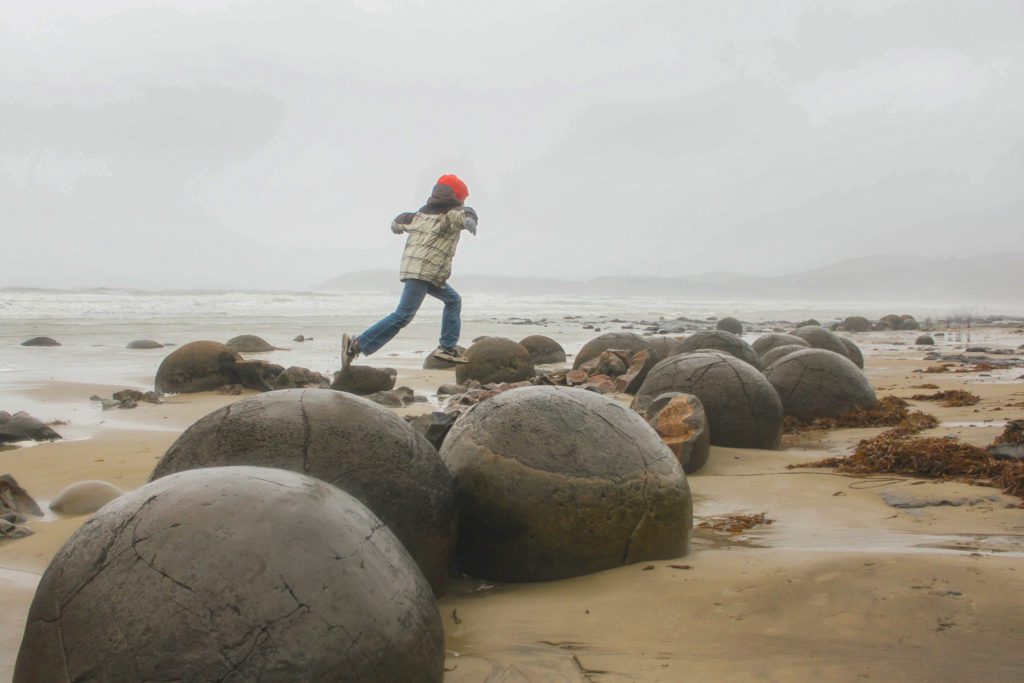
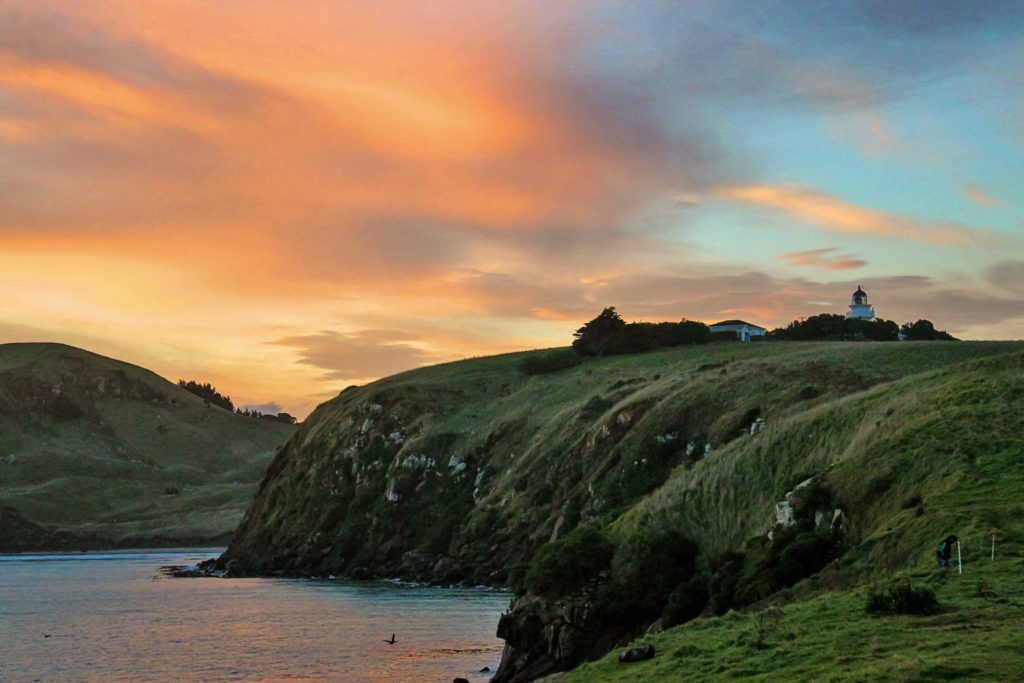
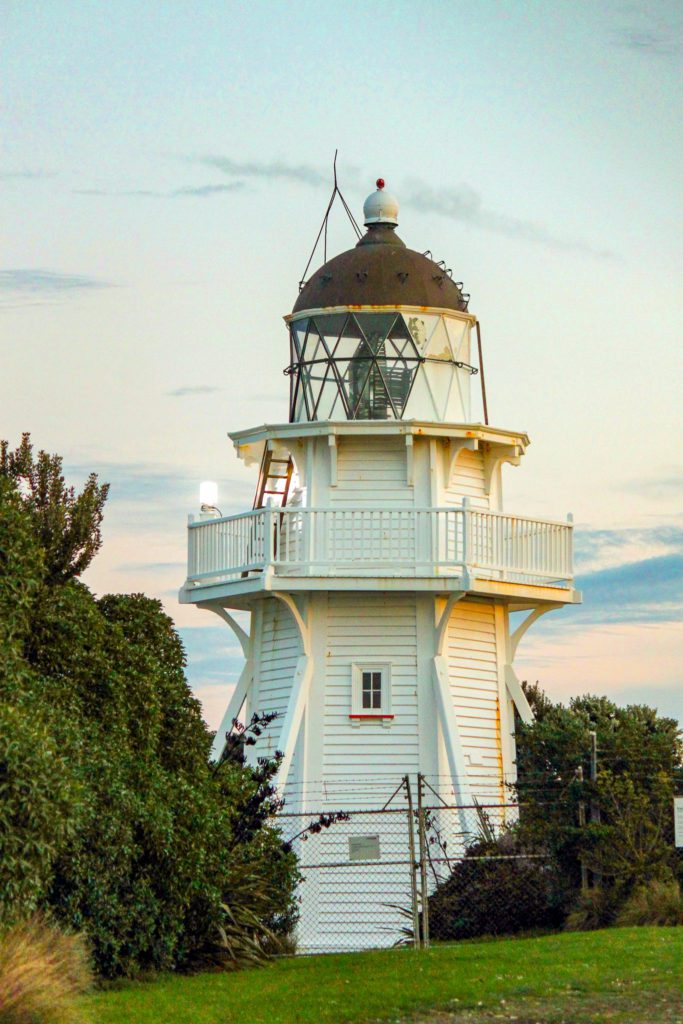


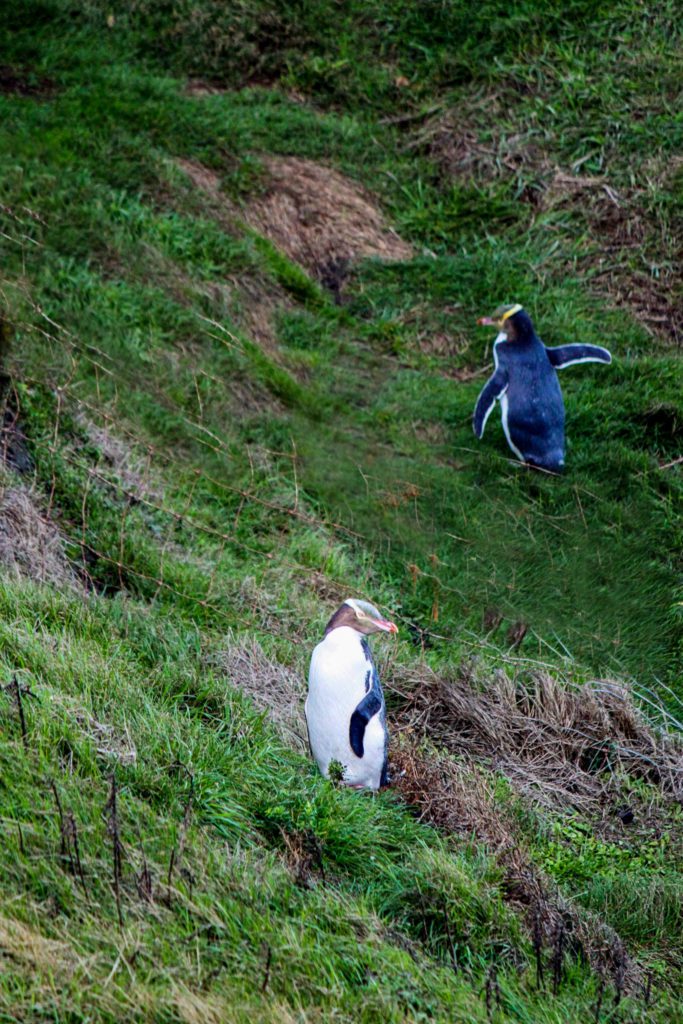
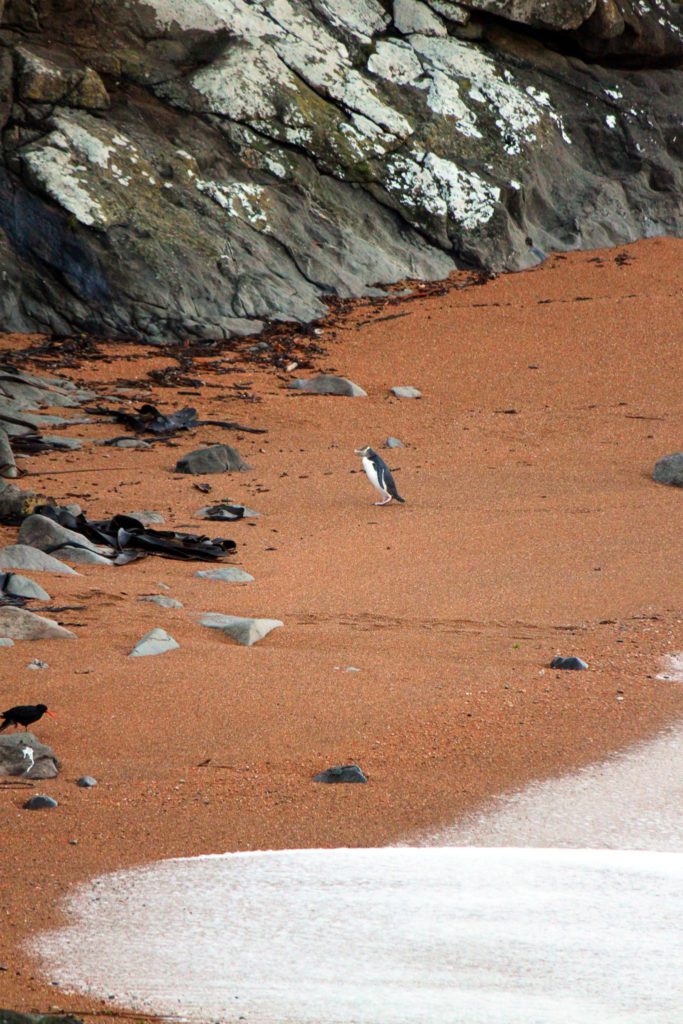

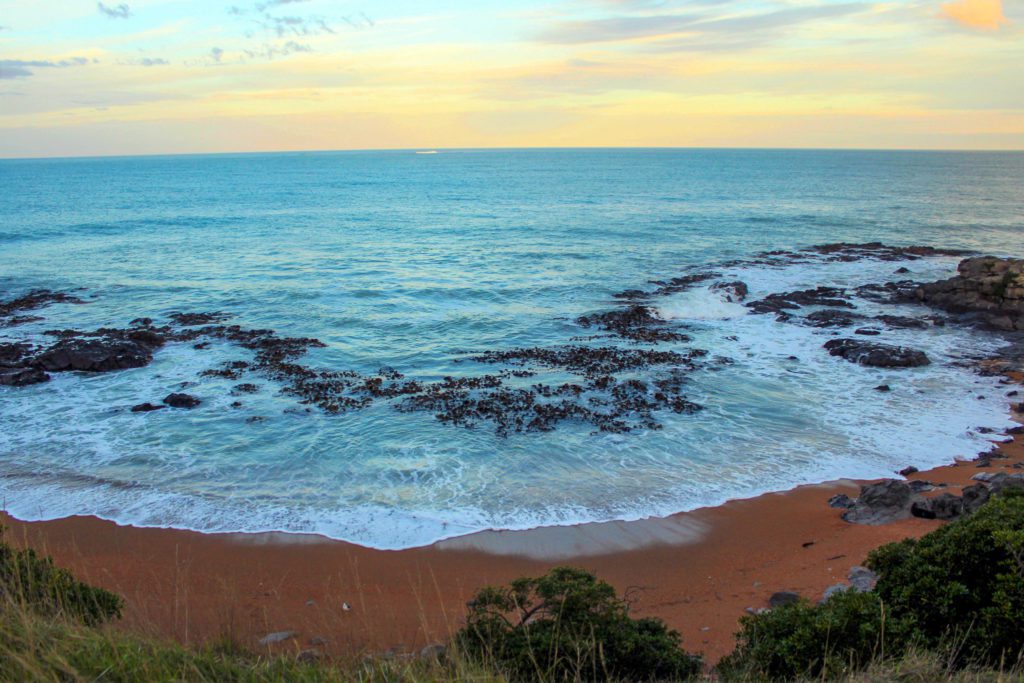
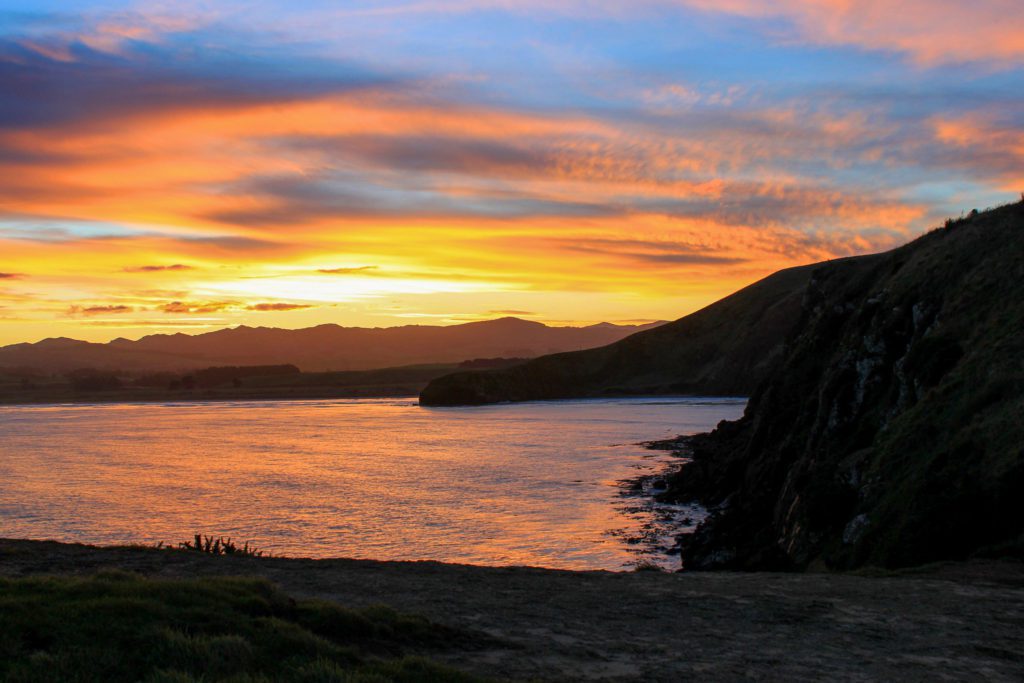

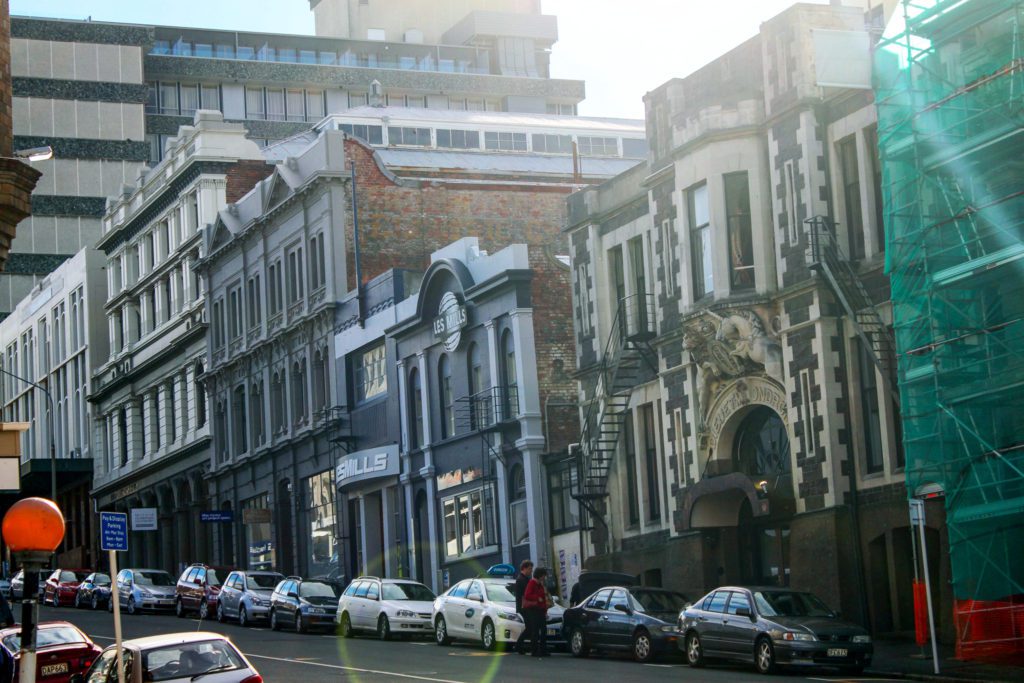
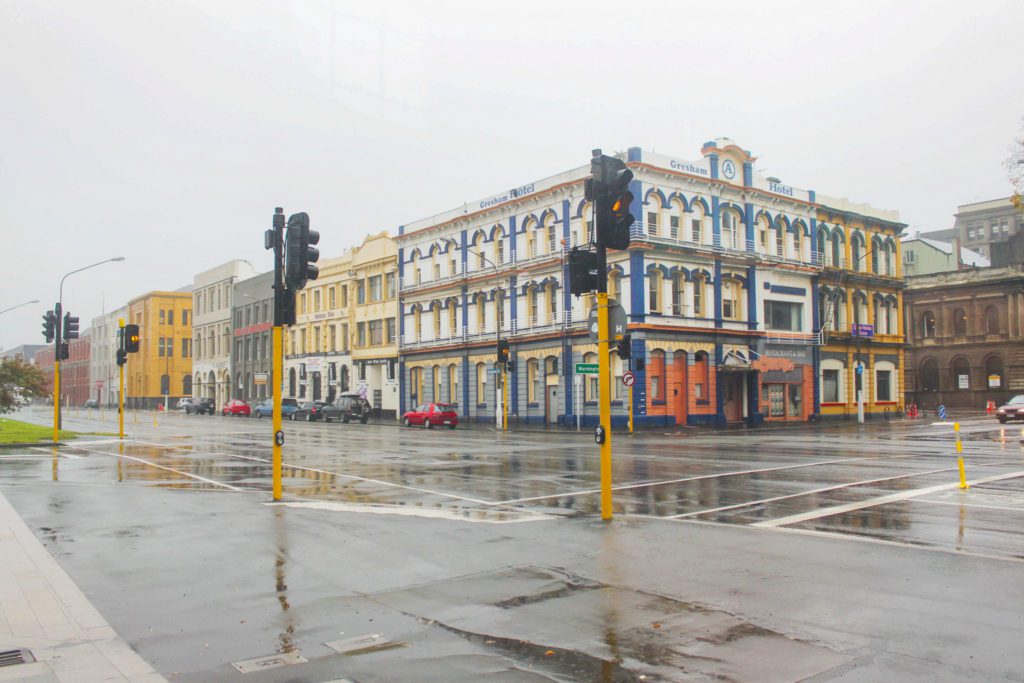



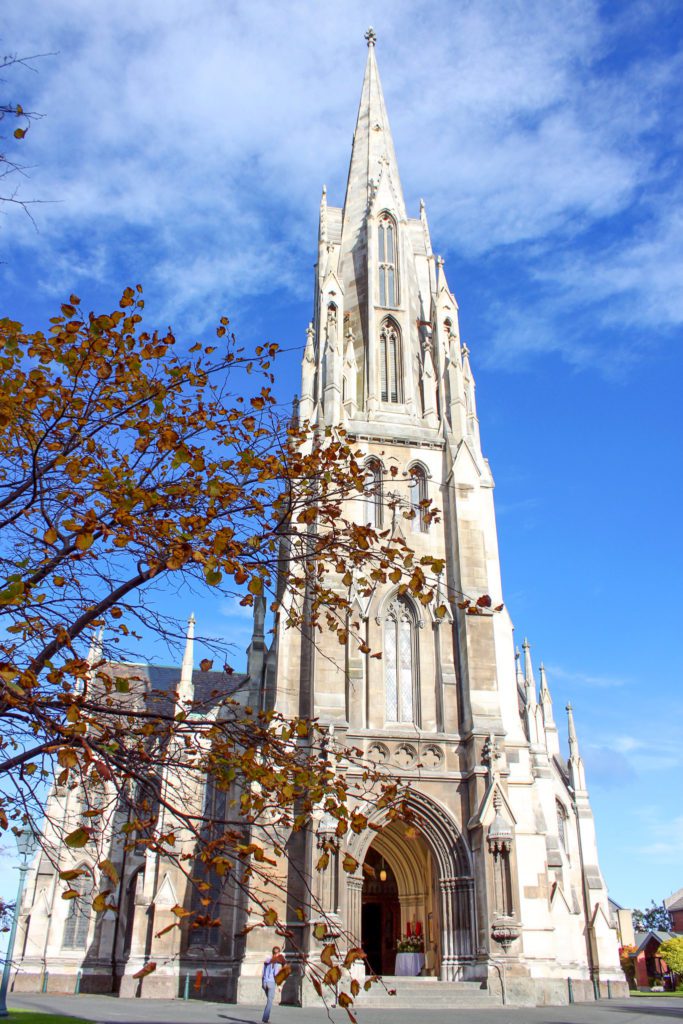

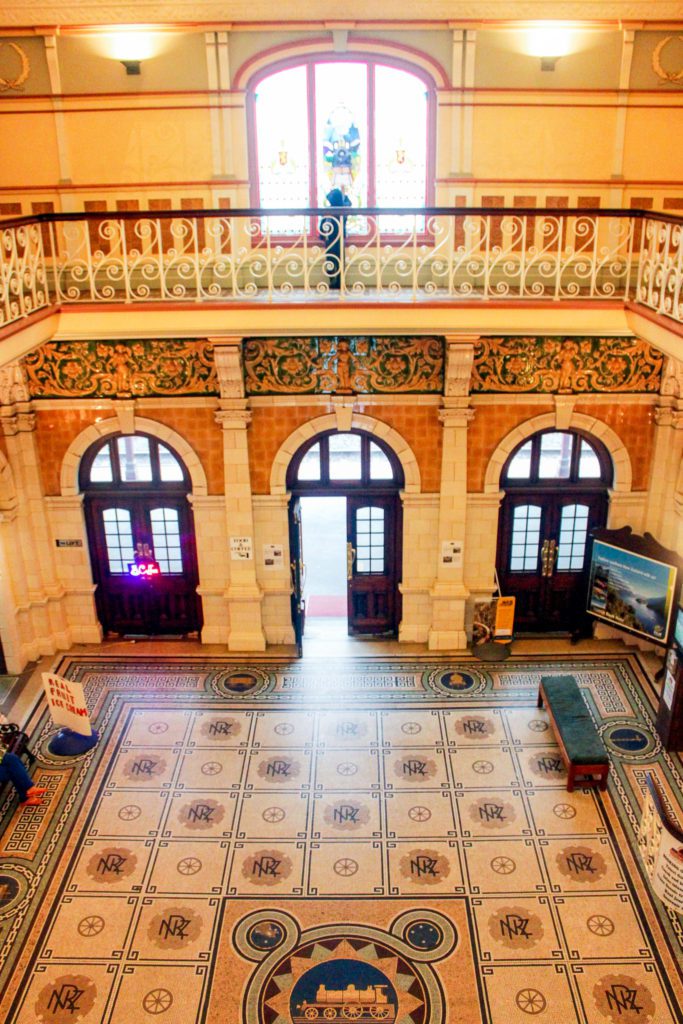
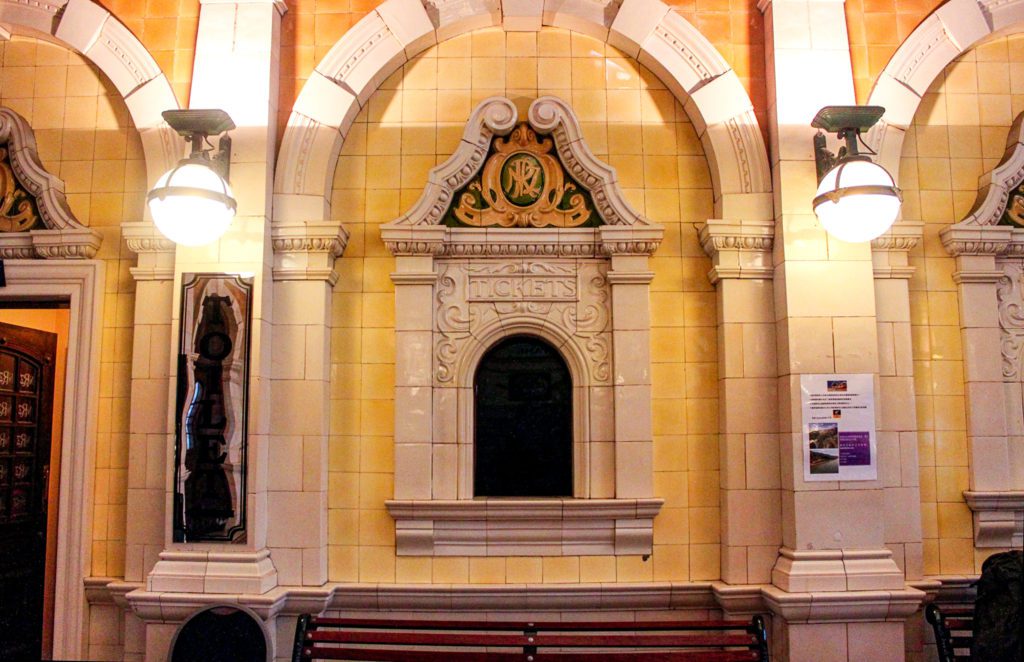
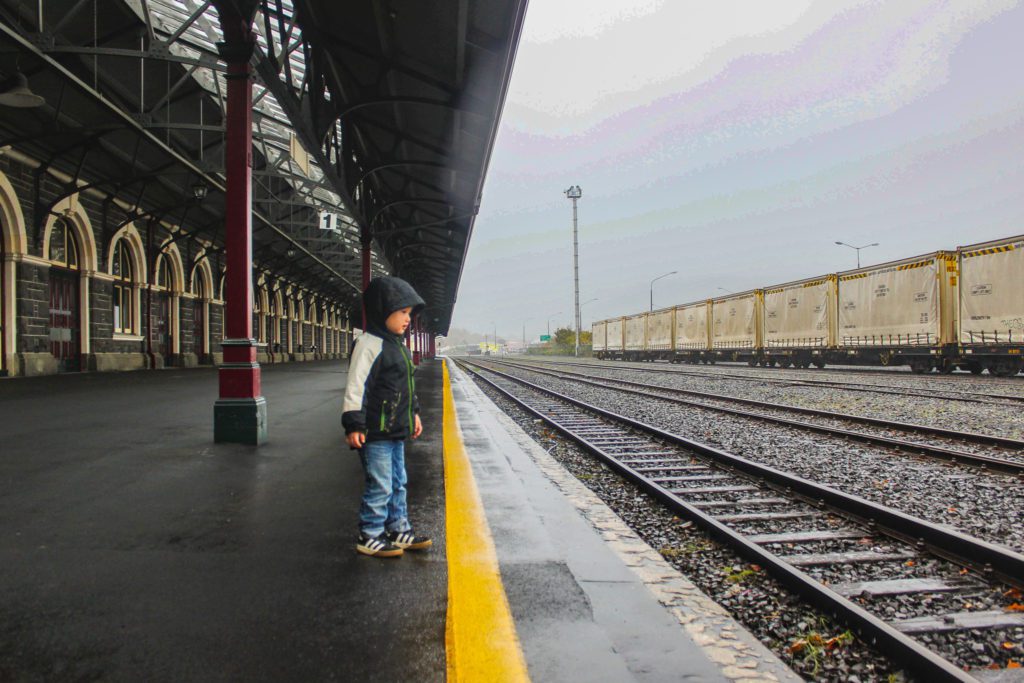
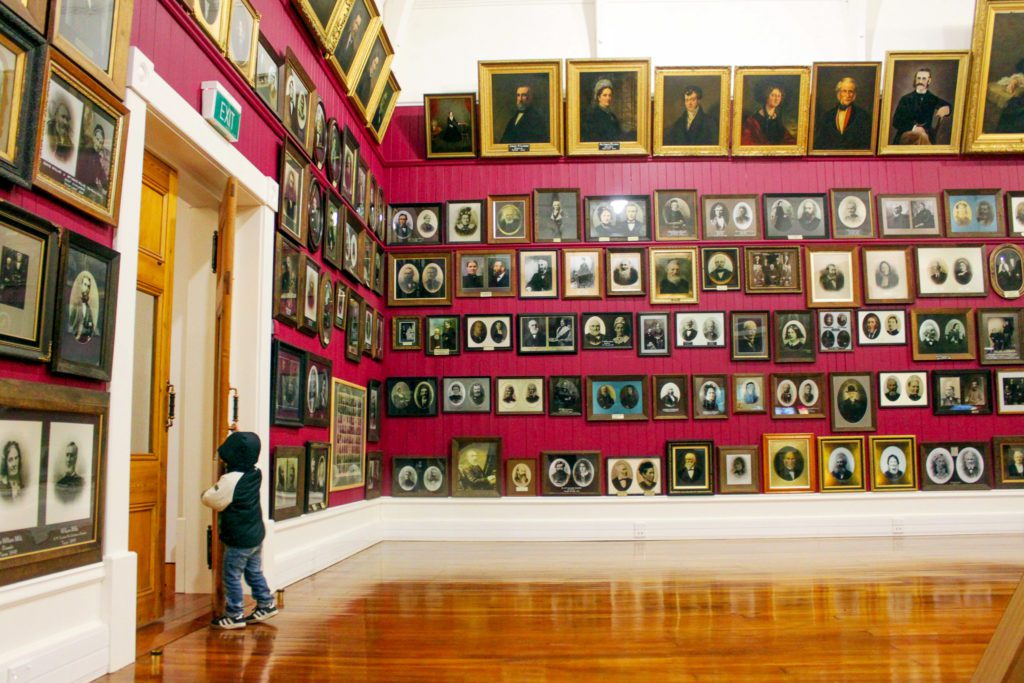
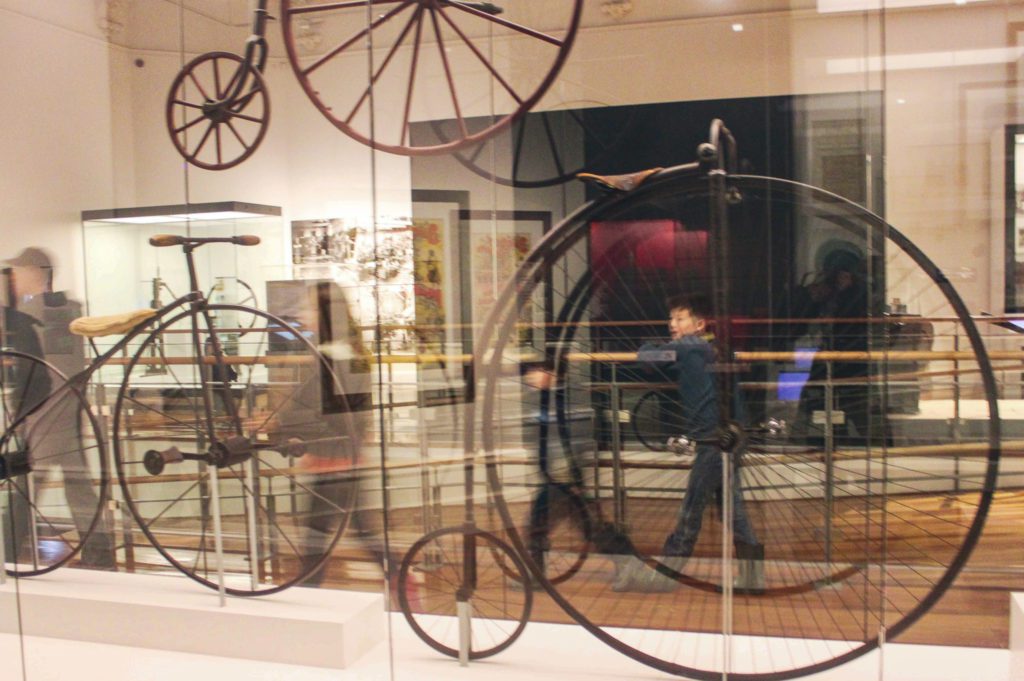

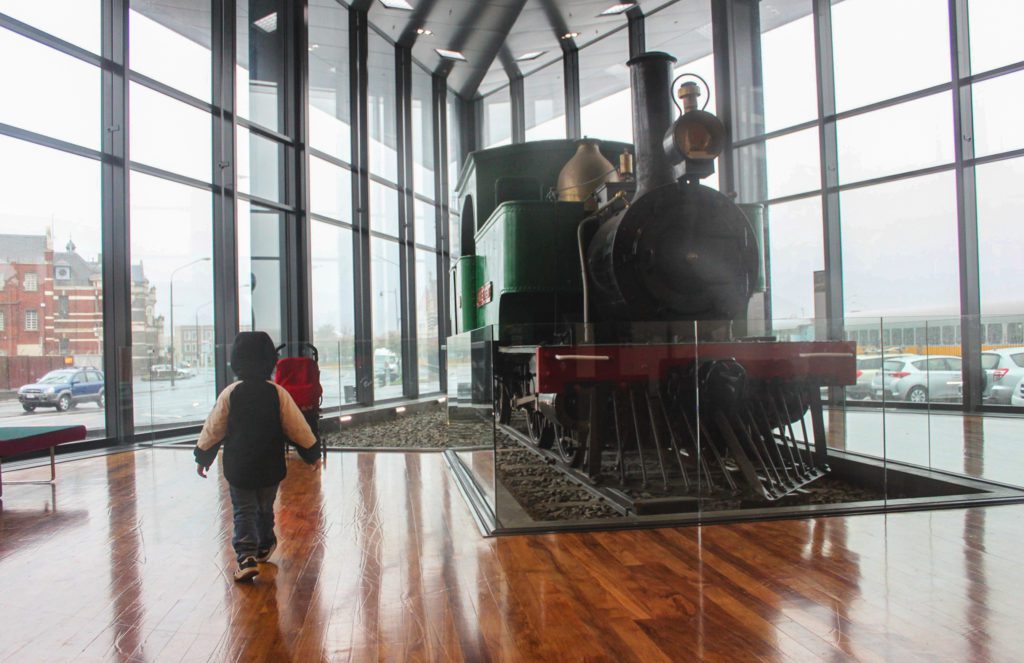
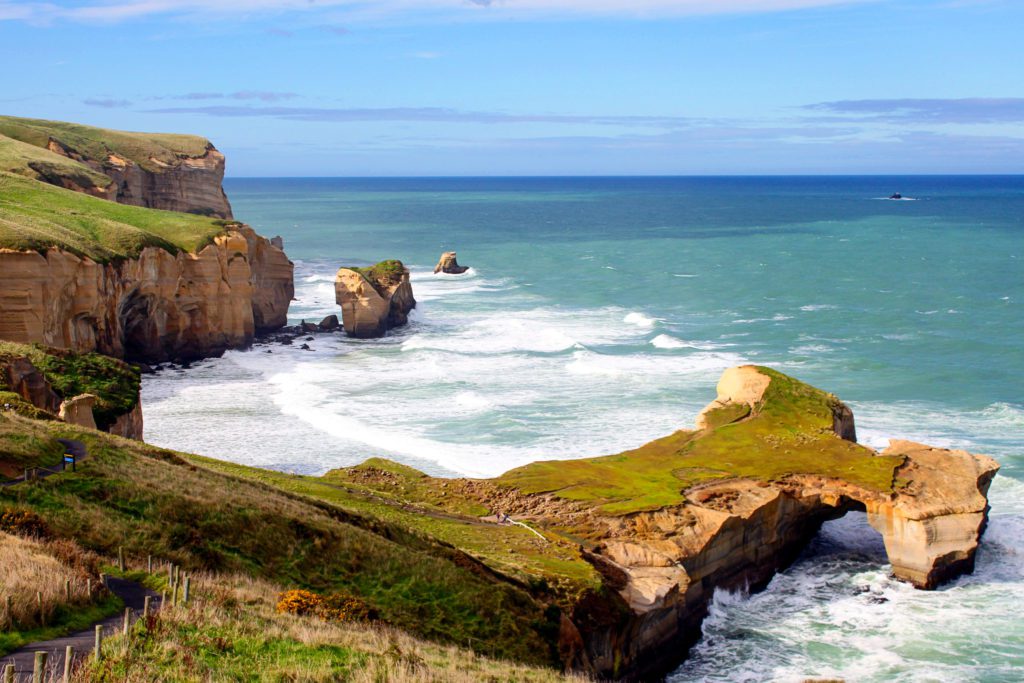
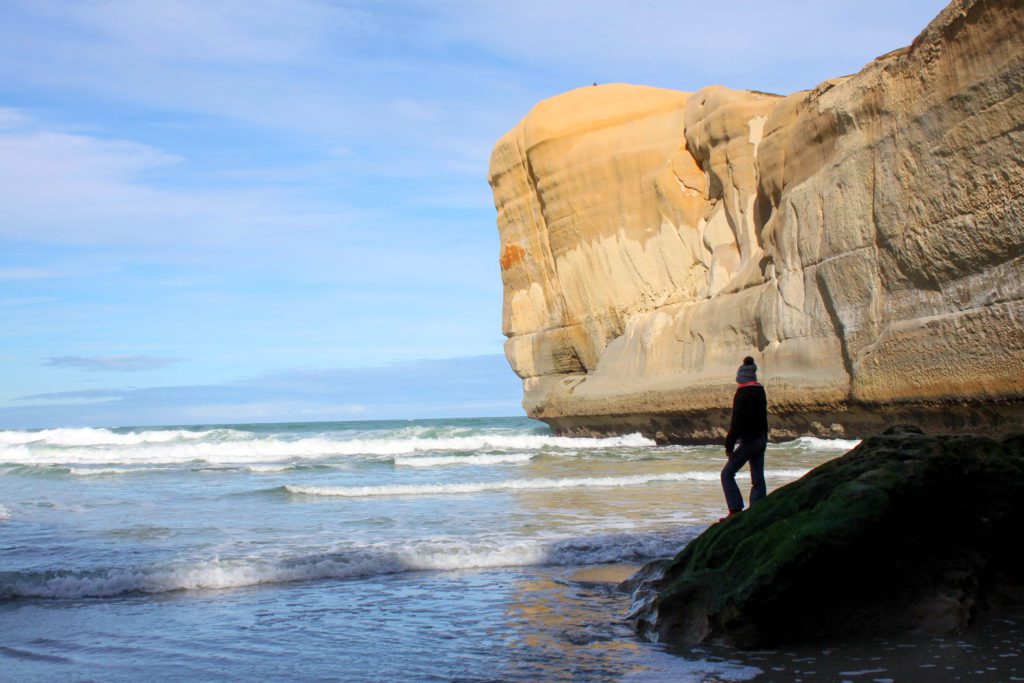
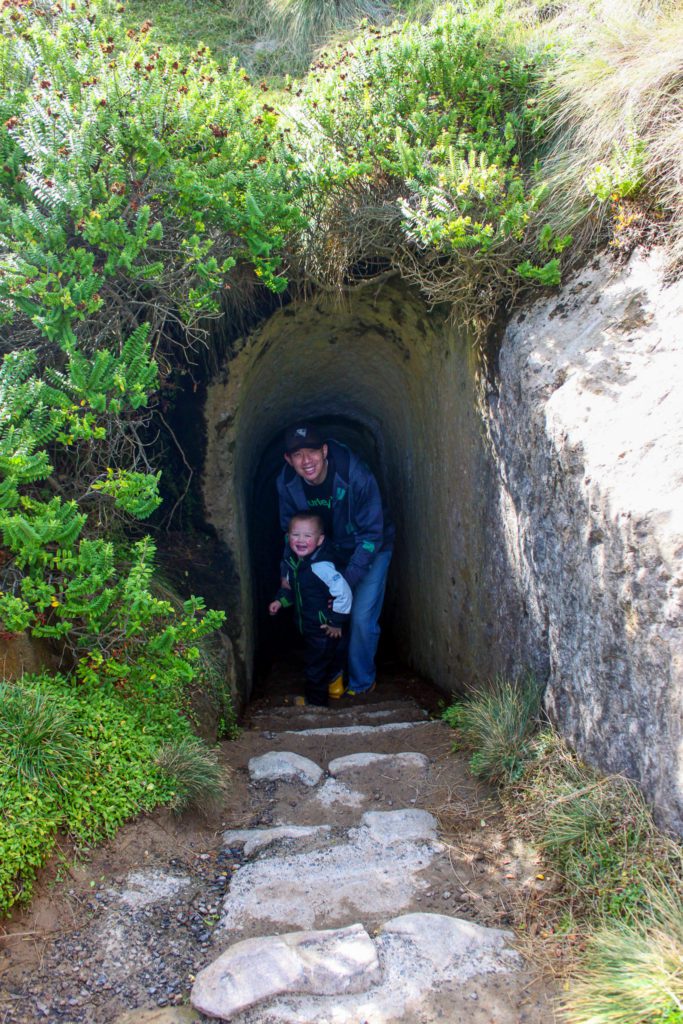
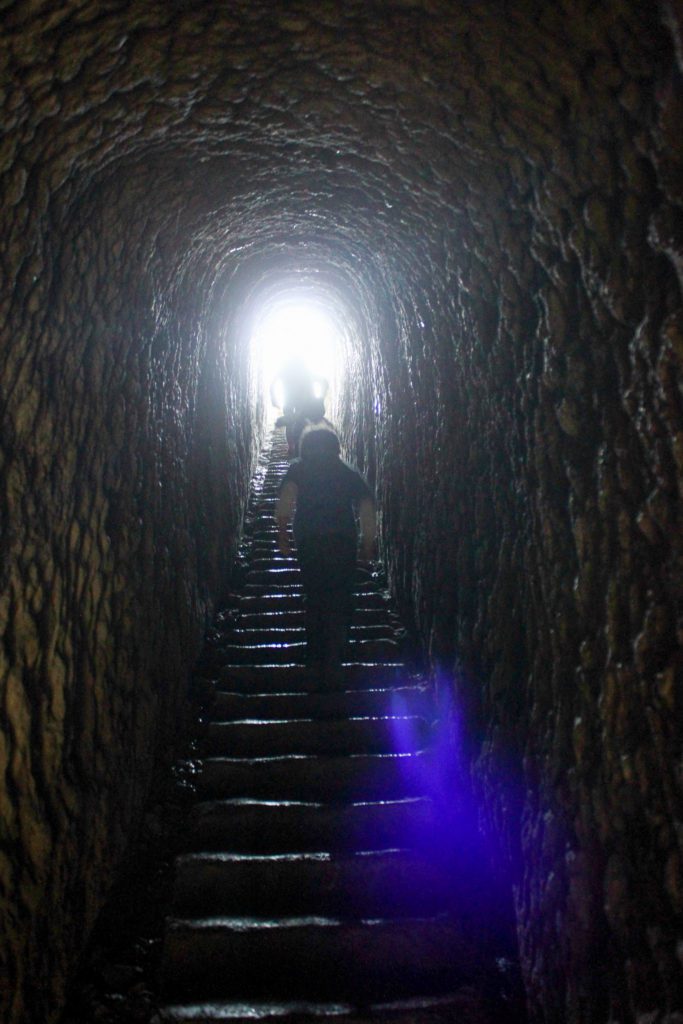
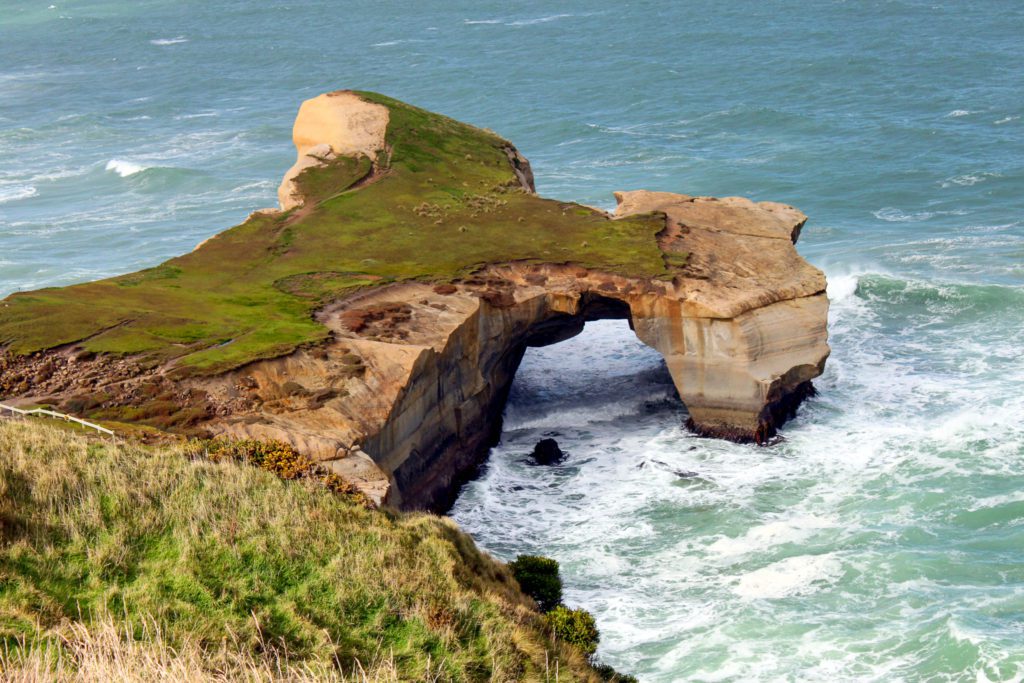
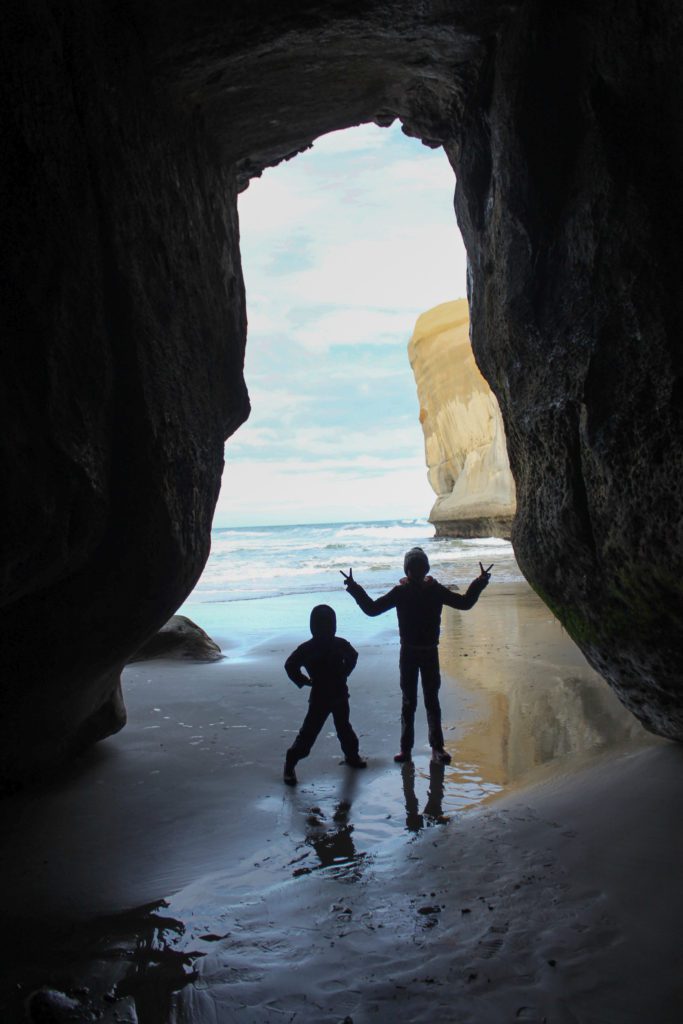
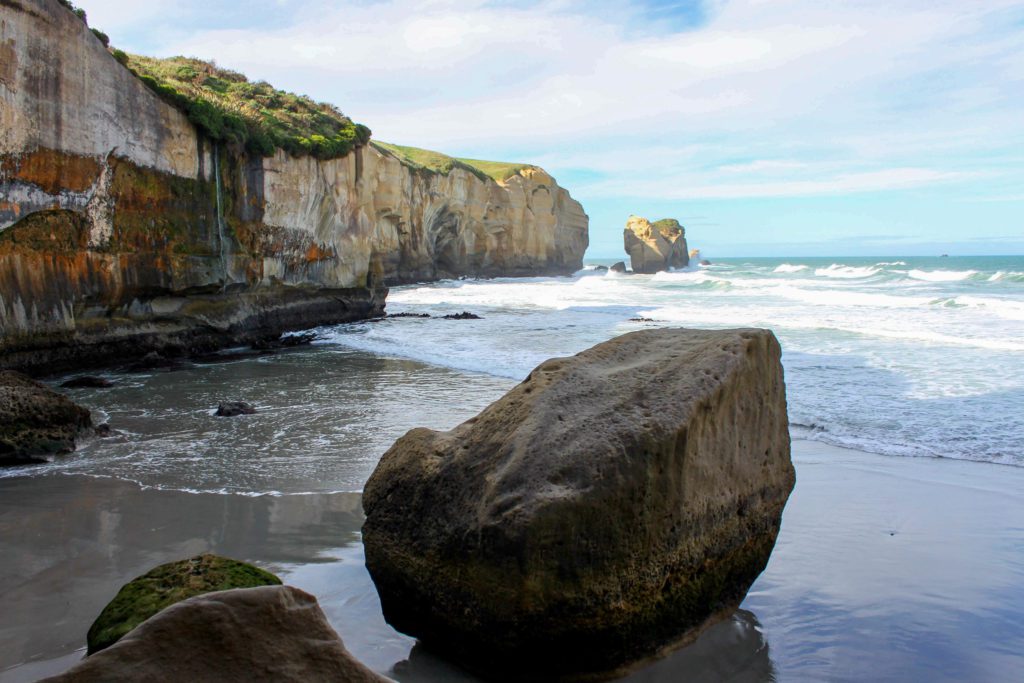
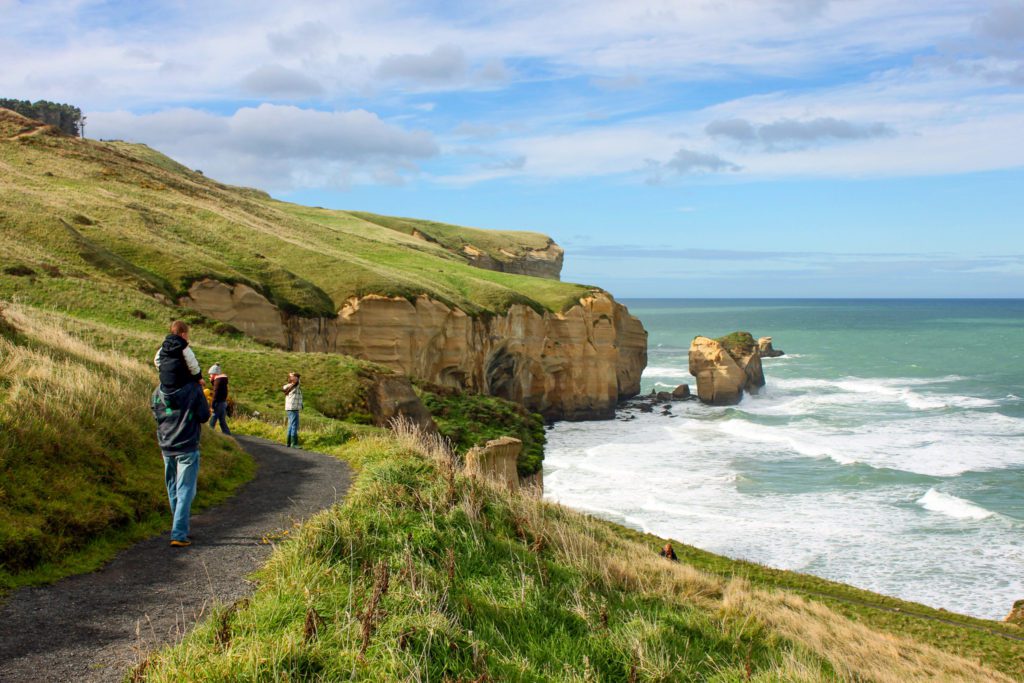

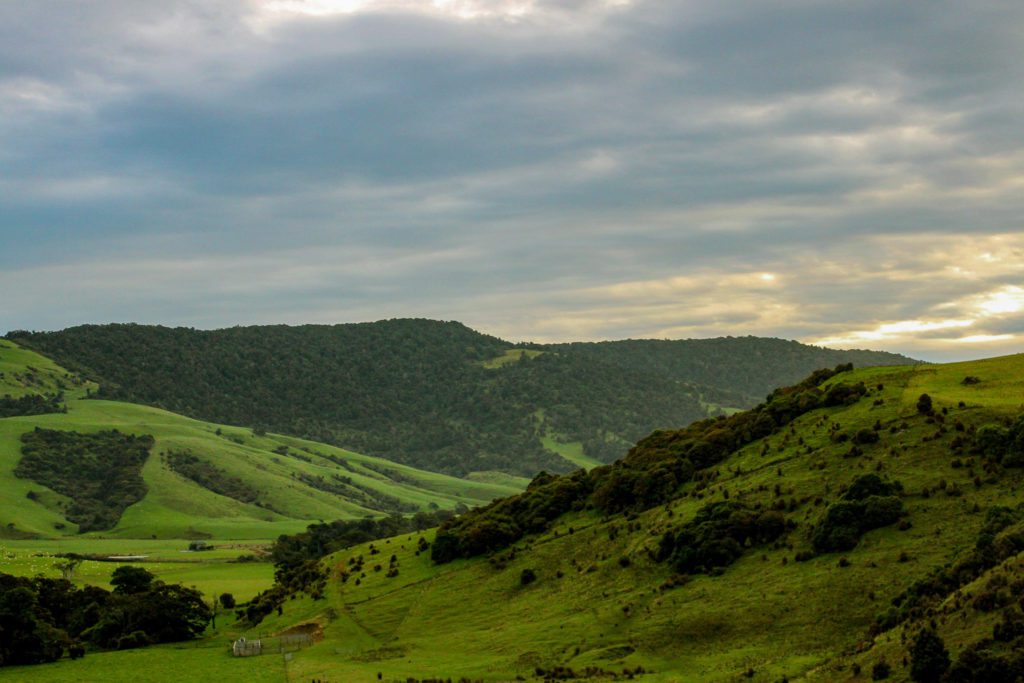
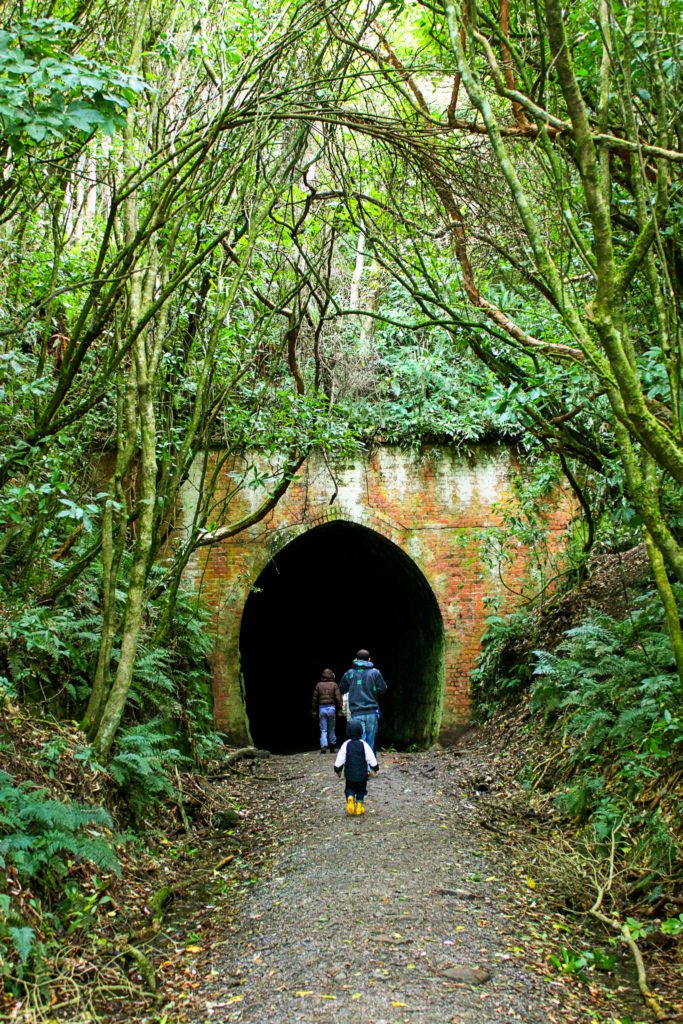

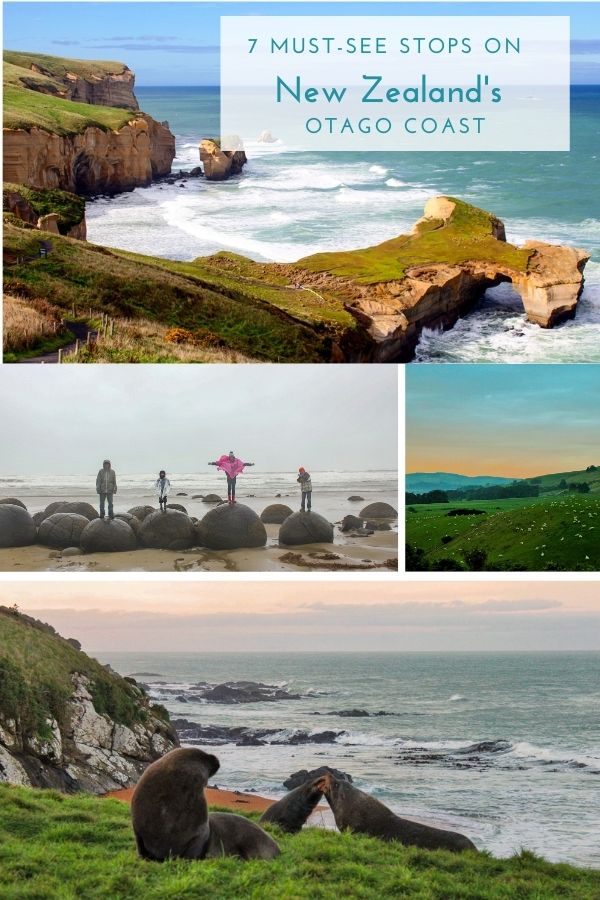
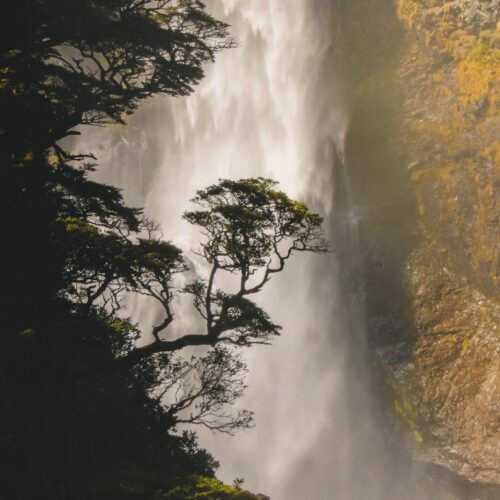
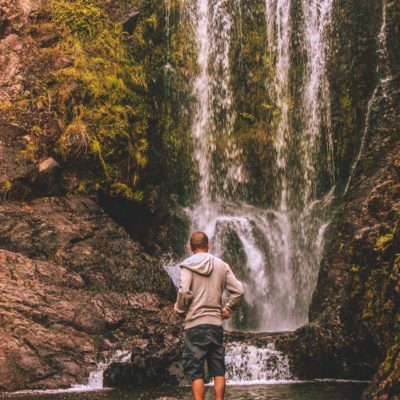
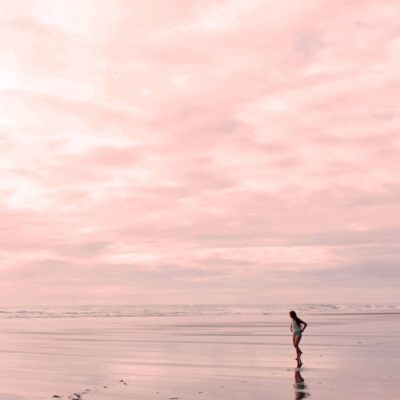
[…] on the rocky outcrops. Be sure to keep your distance and not approach the seals. Kaikoura and the Otago Coast are the best spots to see wildlife in all of New […]